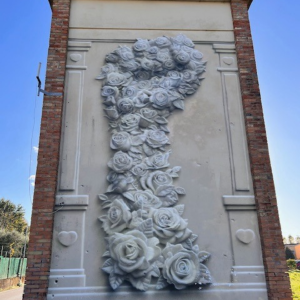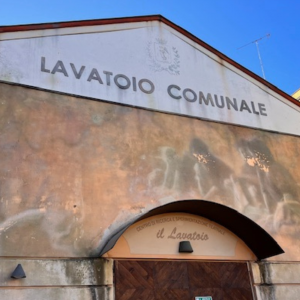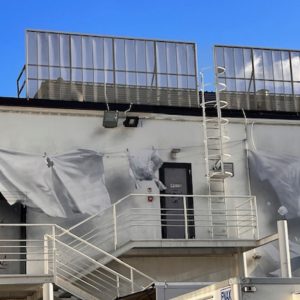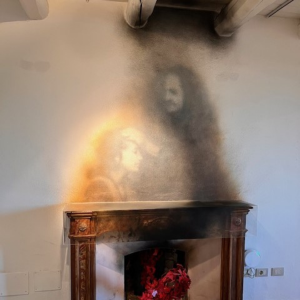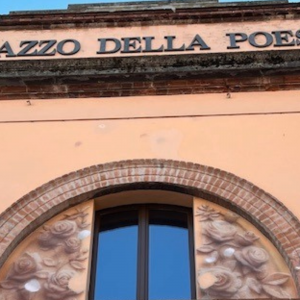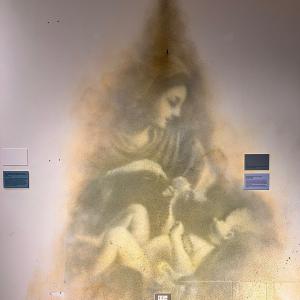Eron’s Street Art in Santarcangelo di Romagna
Santarcangelo di Romagna is a village with a very strong identity: a fair pace of life, elegant architecture, major events and village festivals that smell of tradition.
Poetry is at home here thanks to Maestro Tonino Guerra, who left installations, verses on the walls and ceramics in some of the town's most iconic places.
But there is also another open-air tale: Santarcangelo was the "canvas" of ERON, the first artist in the world to be called upon to fresco the ceiling of a church, who scattered the town with works that have become itinerary stops.
First stop Tower to the People
Arriving from Rimini on the provincial road to Savignano, on the left stands a tower that speaks with the power of kindness: a fist composed of three-dimensional roses, poetry that becomes a sign against hatred and an invitation to non-violence.
The reference runs to Tommie Smith, who raised his fist for human rights at the '68 Olympics: here memory becomes a powerful and silent image. Leave your car in the free car park a few metres away and walk towards the centre: the itinerary really begins.
Second stop Soul of the Wall (Lavatoio Comunale, via Ruggeri)
On the high façade of the old Lavatoio - now the Theatre Research and Experimentation Centre - the wall 'exudes' memories: on one side the face of the Santarcangelo poet Raffaele Baldini, on the other the women at the laundry.
The images surface like shrouds, fragments of history that time fades without erasing. It is a work that links everyday gestures and collective memory.
Third stop Giuliana (behind Supercinema, Piazza Marconi)
A dedication to Giuliana Rocchi, a poet of humble origins, socially and politically committed, who wrote in Romagnolo dialect.
White cloths stretched out in the wind become sheets and then doves: the passage from toil to flight, from words to freedom. An invitation to reflect on the figure of women and their role in contemporary society.
Fourth stop Palace of Poetry (via Pascoli)
In the two lunettes of the uppermost window, roses, the same as in the 'gentle fist', return: the three-dimensional effect makes them come out of the wall.
A light and powerful sign at the same time, perfect for the Palace of Poetry: the rose as a symbol of love, passion, beauty, sensuality.
Fifth stop MUSAS, Historical Archaeological Museum
Inside the museum, three interventions by ERON interweave contemporary art and memory. In the corridor, next to the letter of a partisan condemned to death written to his mother, a 'smoke' coming out of the suction nozzle takes the form of grief: hands on the face, restrained tears.
Above a fireplace, the work Don't Cry shows a father in the act of consoling.
In closing, "GUIDO CAGNACCI IS GONE...": in the place where Cagnacci's Madonna and Child was exhibited, the image reappears "evoked" by the nozzle, as if to say that the soul of a masterpiece remains in the place that hosted it.
Info MUSAS: Via della Costa 26, Santarcangelo di Romagna (RN) - tel. (+39) 0541 624703| 0541 625212.
Tips for true professionals
- Start from Via Pozzo Lungo and walk: the route is short and you enjoy the details.
- Look up and down: many of the interventions are overhead or 'camouflaged', letting time emerge on the surfaces.
- Close at MUSAS: seeing the museum works 'respond' to ERON's interventions gives meaning to the whole itinerary.
